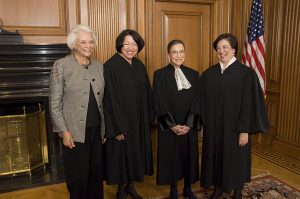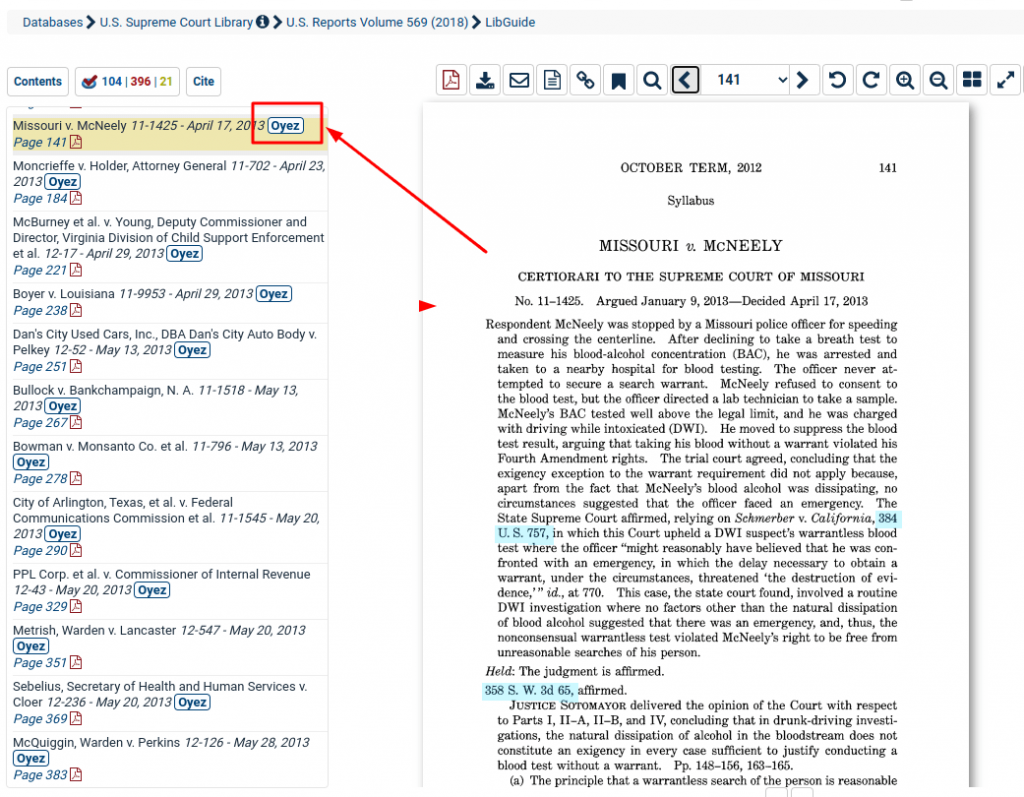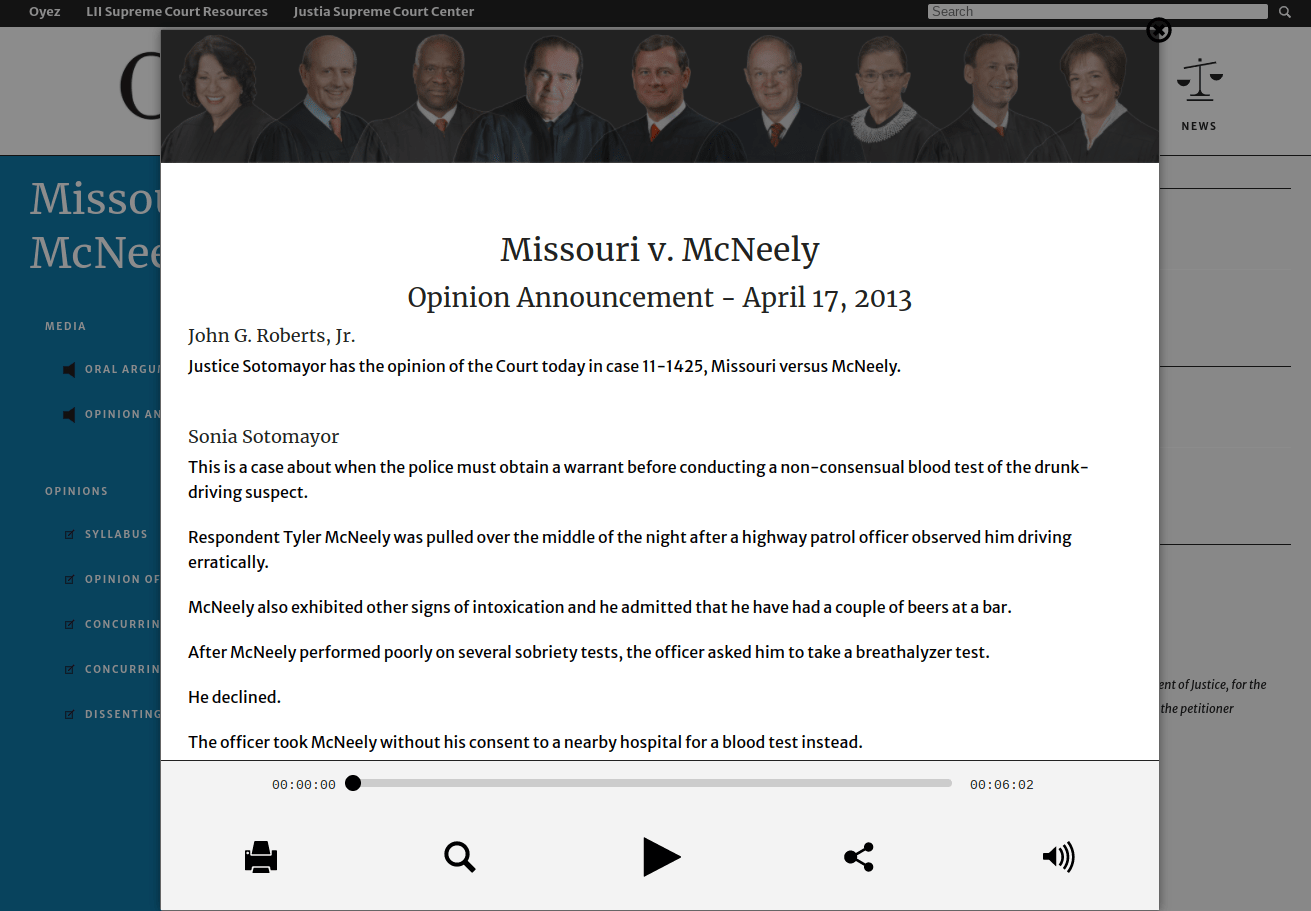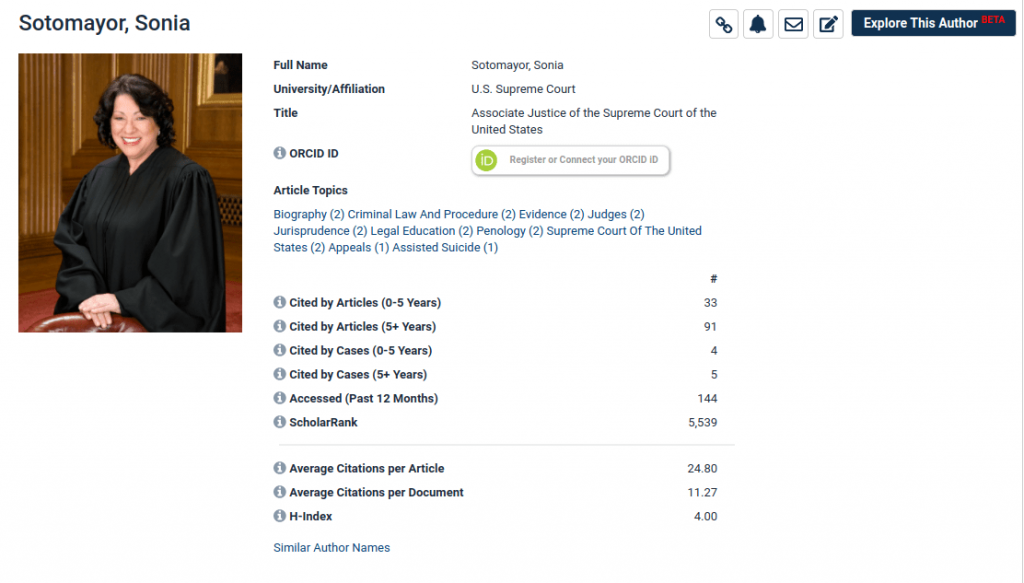Sonia Sotomayor is known as the first woman of color, first Hispanic, and first Latina member of the Supreme Court of the United States. In addition to being the third woman to hold the position, she has a passion for reforming the criminal justice system. Sotomayor has often been referred to as the woman who saved baseball, from her 1995 preliminary injunction against Major League Baseball. In today’s blog, we’ll explore Sotomayor’s education, early legal career, and notable rulings.
From the Beginning
Sotomayor was born and raised in the Bronx, New York City. She was the valedictorian at her grammar school, Blessed Sacrament School. She was elected to the student government at Cardinal Spellman High School, where she also graduated valedictorian in 1972. Her mother, Celina, stressed the value of education, pushed her children to become fluent in English, and bought the Encyclopedia Britannica for her children. During this time, her family moved to the Northeast Bronx, fleeing crime and gang emergence in the Bronxdale Houses housing project.
College and Law School
On a full scholarship to Princeton, Sotomayor became a student activist and co-chair of Acción Puertorriqueña, an organization that served as a social and political center for Puerto Rican students. She worked with the university’s disciplinary committee, where she began to strengthen her legal skills. Sotomayor wrote an opinion piece for the Daily Princetonian about the lack of Latino professors. She also met with the University President on the same issue. Eventually, the university began to hire Latino faculty. In 1976, she graduated summa cum laude with a Bachelor of Arts in History and was also awarded the Pyne Prize, the highest academic award given to Princeton graduates.
With another scholarship, Sotomayor entered Yale Law School in pursuit of a Juris Doctor degree, where she became an editor for the Yale Law Journal. She also was the managing editor of the student-run Yale Studies in Public Order, now known as the Yale Journal of International Law. Sotomayor again pushed for the hiring of Latino faculty and was the co-chair of a group for Latin, Asian, and Native American students. She was heavily influenced by critical race theory, which is clear in her speeches and writing.
Sotomayor graduated with a Juris Doctor from Yale Law School in 1979 and was admitted to the New York Bar the following year.
Early Legal Career
After graduation in 1979, Sotomayor became an assistant district attorney under Robert Morgenthau, handling cases on shoplifting, prostitution, robberies, police brutality, assaults, and murders. A few years later she entered private practice at Pavia & Harcourt as an associate. Specializing in property litigation, international law, and arbitration, her clients were mostly international corporations. She became a partner at the firm in 1988, but later left in 1992 when she was appointed a judge.
As a Judge
In 1991, Sotomayor was nominated to a seat on the U.S. District Court for the Southern District of New York by President George H.W. Bush, becoming the youngest judge in the Southern District and first Hispanic federal judge in New York State. Outside of her Major League Baseball case, she had a few more notable rulings, including Dow Jones v. Department of Justice, New York Times Co. v. Tasini, and Castle Rock Entertainment, Inc. v. Carol Publishing Group.
Sotomayor was later nominated by President Bill Clinton to a seat on the U.S. Court of Appeals for the Second Circuit, where she heard appeals in more than 3,000 cases and wrote about 380 opinions where she was in the majority. She was known to pay close attention to detail and her rulings were unpredictable. Sotomayor was also known to heavily examine lawyers, but still maintained a low profile with the media. She ruled on cases involving abortion, first amendment rights, employment discrimination, and civil rights.
Supreme Court
Following former President Barack Obama’s presidential election victory and announcement of Justice David Souter’s retirement, Sotomayor’s nomination was announced on May 26, 2009. While the nomination was widely praised by Democrats and liberals, there was some hesitation from conservatives and Republicans.
During her nomination hearings, she was questioned about a remark she made during a 2001 Berkeley law lecture where she stated, “I would hope that a wise Latina woman with the richness of her experiences would more often than not reach a better conclusion than a white male who hasn’t lived that life.” When questioned about other remarks in various speeches, she reiterated past rulings that proved her life experience did not sway her decisions.

On August 8, 2009, she was sworn in as the 111th justice. With her confirmation, she became one of five women who have served on the Court. Her addition also set a new record for the Court, having six Roman Catholic justices serving at the same time.
Sotomayor falls on the more liberal side of the Court, aligning with Elena Kagan and former Justice Ruth Bader Ginsburg. Her fellow Catholic Justices, Chief Justice Roberts, Justices Kennedy, Thomas, and Alito, all fall more on the conservative side of the Court.
Notable Rulings
In J.D.B. v. North Carolina, Sotomayor wrote the majority opinion stating that age and mental status are relevant when determining police custody for Miranda purposes. She argued that the law recognizes that a child’s judgement is not the same as an adult.
In Missouri v. McNeely, she wrote the majority opinion stating a warrant is required before a blood test can be taken on a non-consenting driver who is suspected of drunk driving.

To listen to Sotomayor’s opinion announcement, select the Oyez icon in the table of contents.

Sotomayor also strongly dissented in a 6-3 ruling giving Wheaton College, a religiously affiliated university, exemption from complying with the Affordable Care Act (ACA)’s mandate on contraception.
She continues to be known for her fiery attitude and for her voice both inside and outside the Court. Her life experiences and background bring a great deal of diversity to the bench, and she is sure to make a lasting mark for years to come.
Learn More in HeinOnline
Not only does HeinOnline have Sonia Sotomayor’s nomination hearings, but we have a dedicated author profile page where users can peruse her writing and speeches.
To locate her author profile page, search for her name using the author option in the drop-down menu for the one-box search.

From the results page, select Sotomayor’s hyperlinked name to be directed to her author profile page.

A search for her name in the Law Journal Library brings up more than 3,000 results, including:
- Sonia Sotomayor: Role Model of Empathy and Purposeful Ambition
- Sonia Sotomayor and the Construction of Merit
- The Roles of Sonia Sotomayor in Criminal Justice Cases
- Justice Sonya Sotomayor: The Court’s Premier Defender of the Fourth Amendment
Do you want more Supreme Court content, including major landmark decisions, an overview of President Biden’s bipartisan commission, and a deep look at particular justices? Check out our dedicated blog posts!



